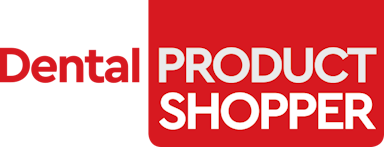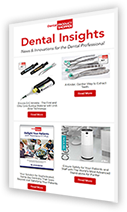 American Eagle’s sharpen-free Pro Thin periodontal instruments feature thin, razor-sharp blades for optimal access
American Eagle’s sharpen-free Pro Thin periodontal instruments feature thin, razor-sharp blades for optimal access
As many dental professionals know, there is a trade-off when it comes to periodontal maintenance. The conventional stainless and carbon steel blades on dental instruments are made thick to allow for sharpening, but that thickness can impede access, making treatments more difficult for clinicians and less comfortable for patients.
American Eagle Instruments’ solution is the Pro Thin line of periodontal instruments. Made with sharpen-free XP Technology, these instruments have thinner, razor-sharp blades and lightweight handles that greatly improve access while enhancing both user and patient comfort. We asked a group of hygienists and periodontists to try 4 of the Pro Thin Gracey Access instruments (1–2, 7–8, 13–14, and 15–16) in their practices for several weeks and tell us whether they lived up to their expectations.
After trying the Pro Thin line’s Gracey Access instruments, hygienist Linda Kovary Bell remarked, “They were terrific. I love that I don’t need to sharpen [and they’re] great for perio scaling and root planing.” Periodontist Ravichandra Juluri was also impressed and said the thin blades were easy to adapt and remained sharp after multiple uses.
Sharpen-Free Instruments
As the only sharpen-free instruments, those designed with XP Technology have the sharpest factory edge available, according to American Eagle Instruments, which states that the instruments stay sharper longer than other stainless or carbon steel instruments while saving time usually required for sharpening.
The sharpen-free technology was the favorite feature of several evaluators, including Dr. Juluri, who said, “The blades remained sharp, and [we] didn’t have to sharpen.” Kovary Bell noted that the blade retained its edge, and hygienist Amy Sherman said, “I love that we don’t have to sharpen them.” Because they don’t need sharpening, Patricia Brune, RDH, said the Pro Thin instruments save her time every morning. “They stay sharp and were thin [enough] to get into narrow pockets,” Brune added. Noting that the instruments “don’t dull with each use,” Dr. Amy Fuller shared, “The instruments are very light, easy to adapt, and survive multiple uses without needing refinement.”
Improved Access
The thin blades of the Pro Thin instruments enable easy access to periodontal pockets and interproximal areas, and the longer shank and optimal angulation further enhance access. Overall, the evaluators were impressed with how the instruments improved access to the oral cavity. “They are very good at reaching deeper periodontal pockets and are very lightweight,” noted hygienist Sara Solberg, while Dr. Kim Gandhi said they offered “excellent angulation and access.” Kovary Bell said she was able to do a better job removing calculus with less effort and that furcations were more easily accessible. Margaret Spencer, RDH, said these instruments were crucial in complicated, deep pockets where access was difficult.
Dr. Juluri discussed a perio surgery where access was difficult with the instruments he normally used. With the Pro Thins, he said, “The thin blade and angle of the shank made access easy, and using it on distals has been effortless.” Brune had a patient with a great deal of bone loss and recession on the lower anterior teeth with deep narrow pockets and said, “I loved how the longer shank on the 7–8 made it easier to access these areas and made it more comfortable for the patient.” For Sherman, the instruments were great in the posterior areas and made her job “easier and somewhat quicker with the ability to remove tartar deep in a posterior pocket.” She added, “I also love them under crowns and bridges.”
User and Patient Comfort
An always super-sharp periodontal instrument provides superior tactile sensitivity, requiring a lighter grasp and only slight pressure to plane away calculus and tartar. This, combined with easier access, translates into less user fatigue and greater comfort for both the clinician and patient.
“I like that they are very lightweight, so detecting calculus—without switching to an explorer—is easy,” said Solberg. When asked what features they liked most, Dr. Brian Gurinsky said it was the feel of the instruments, and Dr. Gandhi agreed, describing the instruments as having “excellent tactile feel and sharpness.” Dr. Stanley Levsky said the instruments were “lightweight for better tactile feel and [had] finer tips than I have been using.” When asked to suggest an improvement, Dr. Juluri recommended a regular metal handle and a wider handle.
Periodontist Griselle Ortiz-Ramsey said the instruments reduce operator fatigue, and hygienist Susie Pogliano described them as light and more comfortable for patients. Spencer said working with Pro Thins produced less noise, thereby decreasing patient anxiety. She added that she experienced an easier grip, and she didn’t need to add more pressure or muscle while scaling.
Overall Satisfaction
Calling it a very good product, Dr. Gandhi said the Pro Thin instruments are the best she’s ever used, and Dr. Ortiz-Ramsey said she was very impressed and their office is considering buying more. “I can’t say enough about how great they were,” concluded Sherman. “These instruments are amazing. We will be ordering them in the future.”







